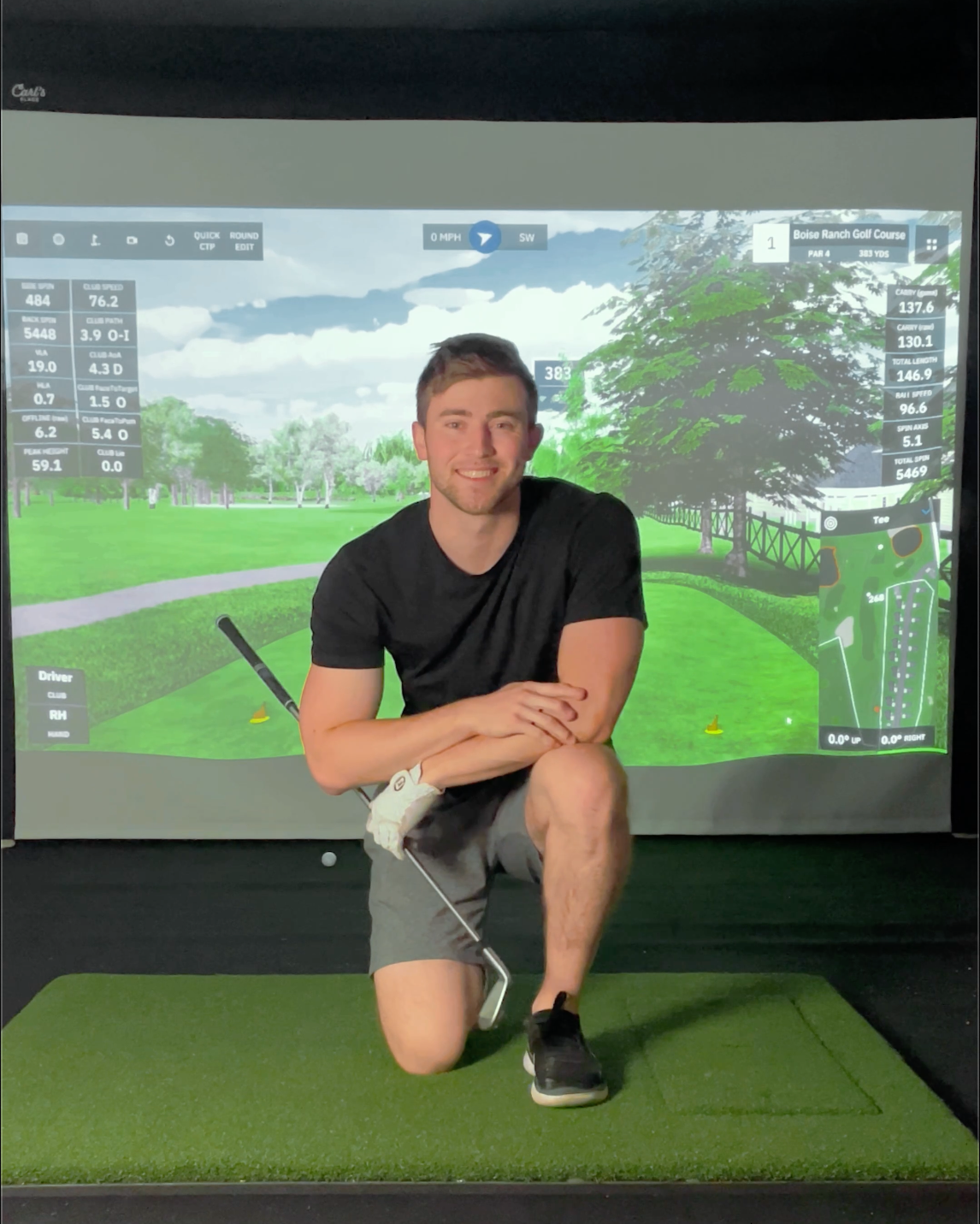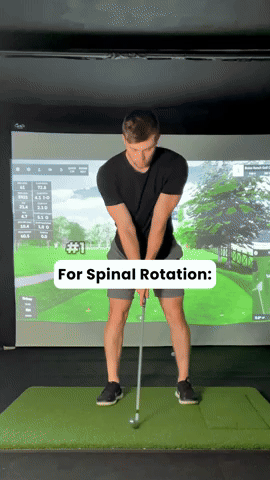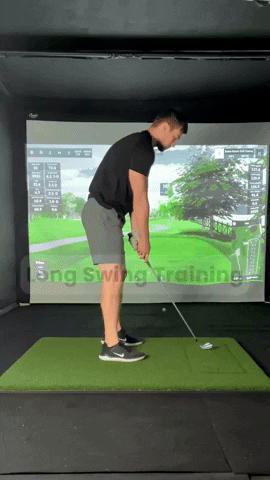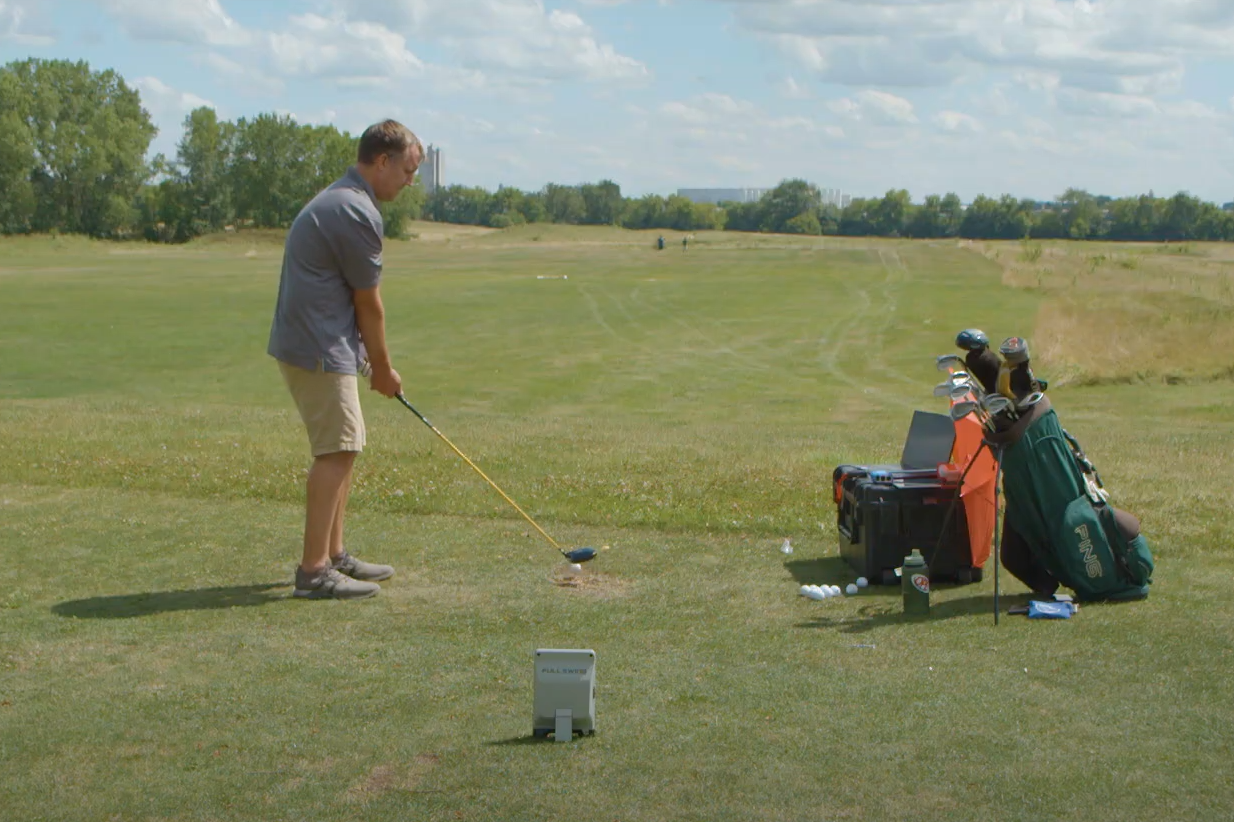Guest Column By Dr. of Physical Therapy Devon Hoffman of Rise Train
 Golf is a game of precision, technique, and strategy, but it also demands physical prowess and some exercise. Whether you're a seasoned golfer or just teeing off, enhancing your mobility and flexibility can significantly improve your game.
Golf is a game of precision, technique, and strategy, but it also demands physical prowess and some exercise. Whether you're a seasoned golfer or just teeing off, enhancing your mobility and flexibility can significantly improve your game.
To boost your golfing performance, consider incorporating the following golf exercises and tips.
Five Tips For How To Increase Your Golf Flexibility And Mobility
Focus on Dynamic Stretching
Before swinging your clubs indoors or outdoors, prioritize dynamic golf stretching exercises to loosen up your muscles and improve flexibility.
Incorporate movements that mimic the actions of golf swings, such as arm circles, leg swings, and torso twists.
Dynamic stretching helps enhance range of motion, allowing you to achieve smoother swings and better control over your shots.
Include Resistance Training To Make Golf a Workout
Strength and stability are essential for generating power and maintaining control throughout your golf swing. Incorporate resistance training exercises that target key muscle groups involved in golfing, such as the core, shoulders, back, and legs.
Exercises like squats, lunges, rows, and rotational movements PNF "Lifts" and "Chops" with resistance bands can help improve your strength and stability on the course.
If you're looking to make golf one of your "workouts" for the week, consider walking the 18 holes when you go out, as this can burn between 800-1,300 calories. Now that's a workout!
Or, use a treadmill between shots on your indoor golf simulator. You might think that’s crazy, but we’ve heard of indoor golfers who do it to get exercise.
Practice Yoga or Pilates
Yoga and Pilates are excellent practices for enhancing flexibility, balance, and core strength - essential components for a successful golf game.
Poses and exercises that focus on spinal rotation, hip mobility, and core stabilization can translate directly to improvements in your golf swing. Consider integrating yoga or Pilates sessions into your weekly routine to reap the benefits on the course.
Utilize Foam Rolling
Incorporating foam rolling into your pre- and post-golf routine can help alleviate muscle tightness and improve tissue quality.
Target areas prone to tension and tightness, such as the calves, hamstrings, quadriceps, and upper back. Foam rolling can enhance mobility and reduce the risk of injury by promoting blood flow and releasing trigger points.
Avoiding Common Injuries With Consistency
The most common golf injuries are strains, sprains, and inflammation from overuse during repeated movements. These include:
- Golfers elbow
- Tennis elbow
- Lower back strains
- Rotator cuff pathologies
- Hip impingement
Utilizing a gradual approach to increasing your swing count per day, ensuring you have proper mechanics in your swing, and optimizing your flexibility will help to avoid every single one of these conditions.
Consistency is key when it comes to improving mobility and flexibility for golf. Incorporate mobility exercises into your warm-up and cool-down routines before and after each round.
Additionally, dedicating time to specific mobility drills and stretches on a regular basis will yield long-term benefits for your golf game.
Dr. Hoffman’s Personal Story
As a doctor of physical therapy and certified strength and conditioning specialist, I work with many golfers throughout the summer months in my clinic.
One gentleman I worked with recently was just breaking out his clubs in early April to begin his season, but began getting a sharp pinching pain in his lead hip every time he swung the club.
This was leading to notable limitations in his distance, caused severe soreness by the end of the round, and eventually led him to stopping playing all together.
He eventually ended up in my clinic, where we were able to work through some significant hip mobility deficits and stabilizer weakness. After two weeks of consistent implementation, he was able to complete his first pain free swings in more than two months.
Just as you invest in your 401k, it is important to invest in your health each and every week. This will pay dividends as we age, allowing you to play your favorite hobby for many more years to come.
Conclusion
Golf is not only a leisurely pastime but also a form of exercise that engages various muscle groups and demands physical exertion.
By focusing on golf stretches, mobility, flexibility, and strength training, you can elevate your performance on the course and reduce the risk of injury. Incorporate dynamic stretching, resistance training, yoga or Pilates, foam rolling, and consistent mobility work into your golf regimen to unlock your full potential as a golfer.
Remember, a well-conditioned body is the foundation for mastering the art of golf, and will ensure it's a sport you can play your entire life.


